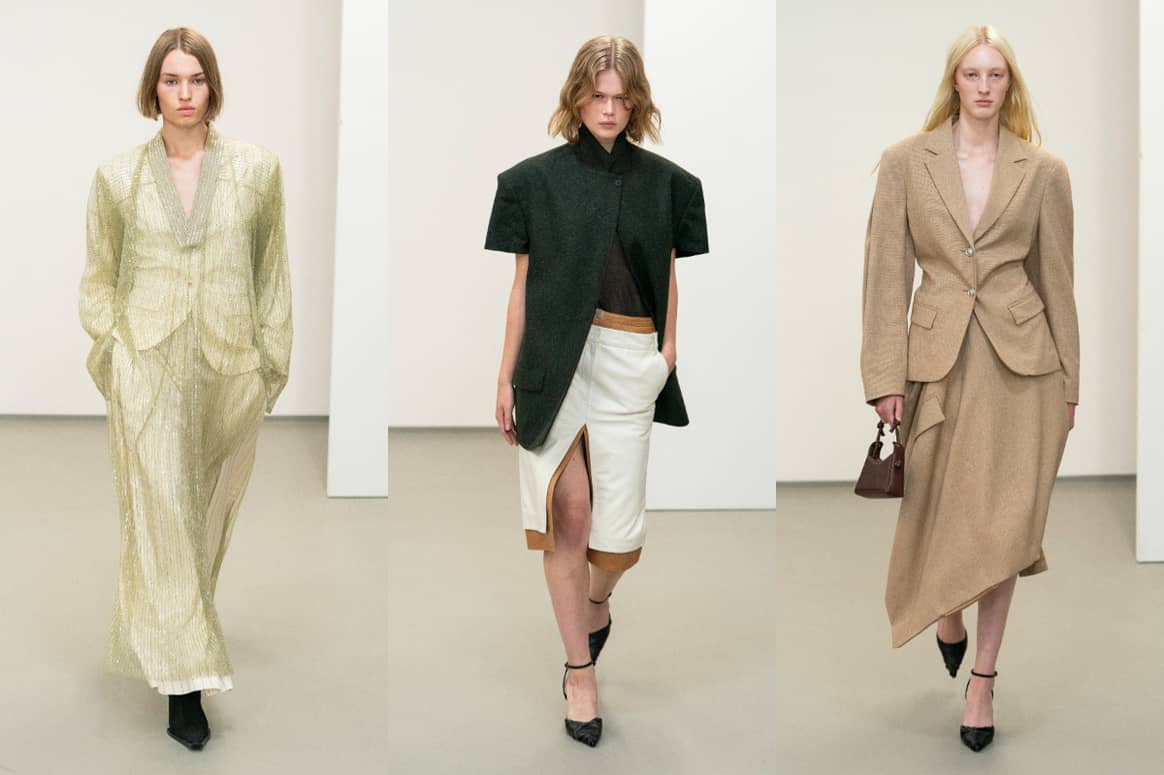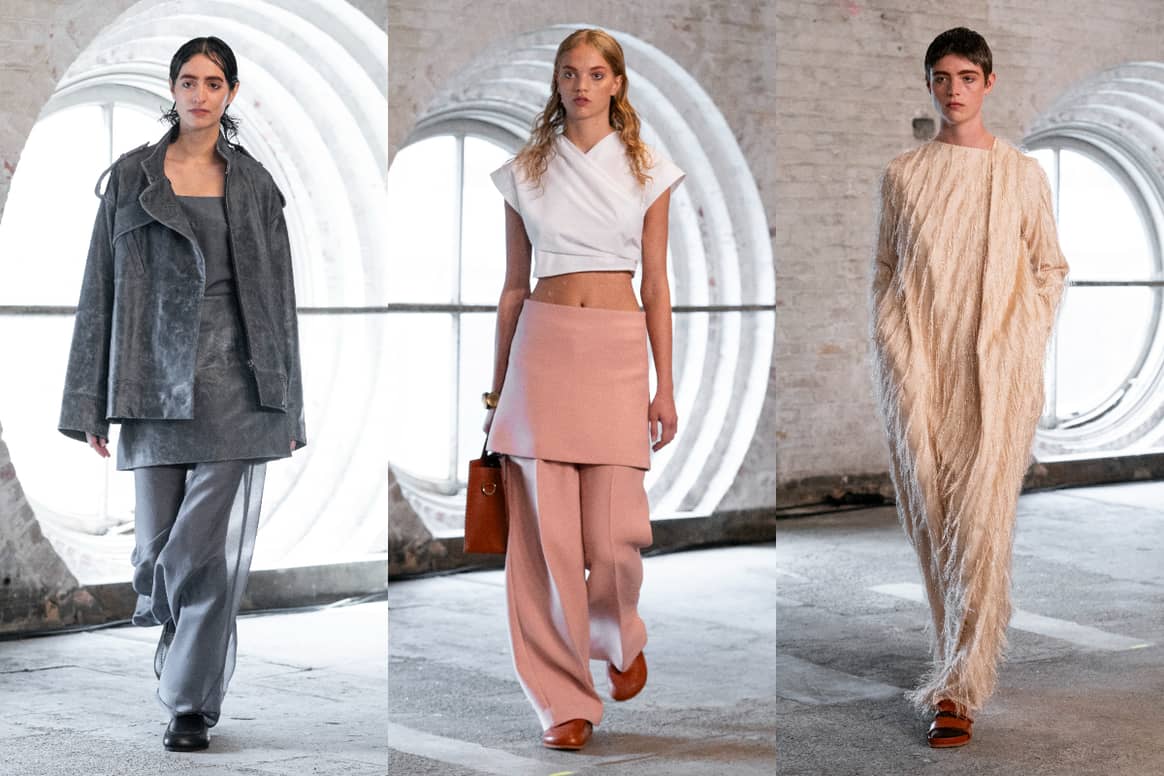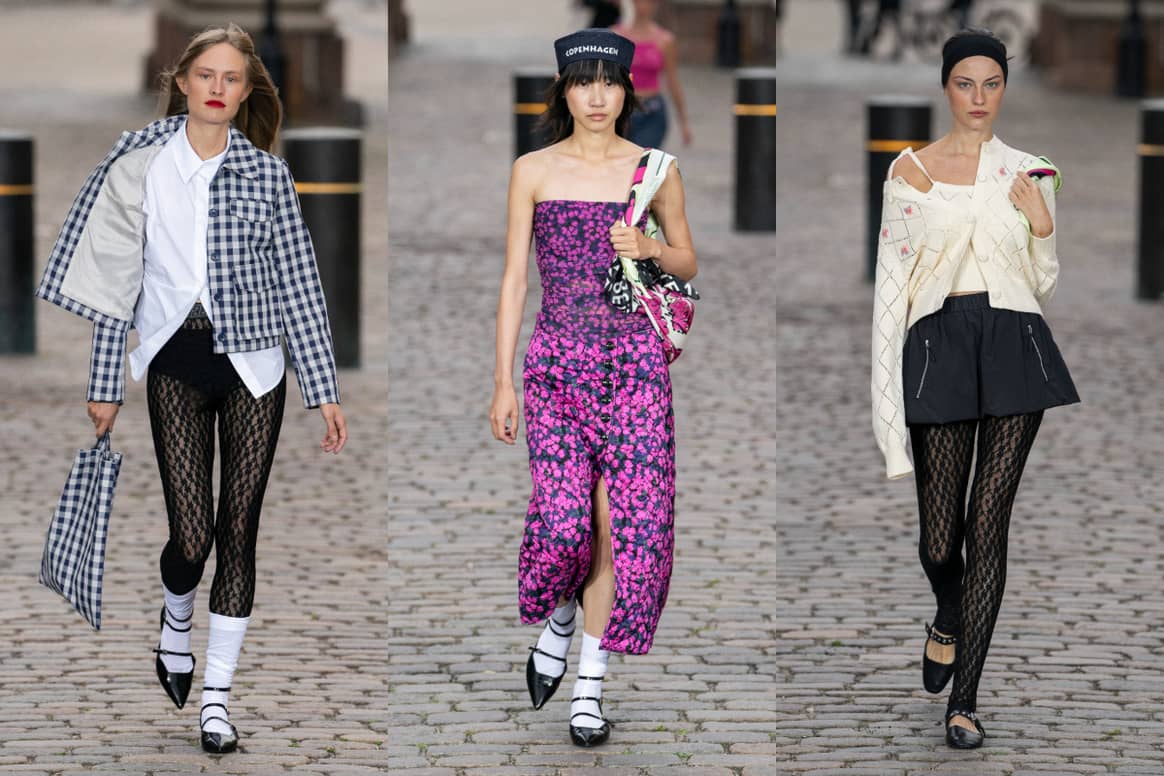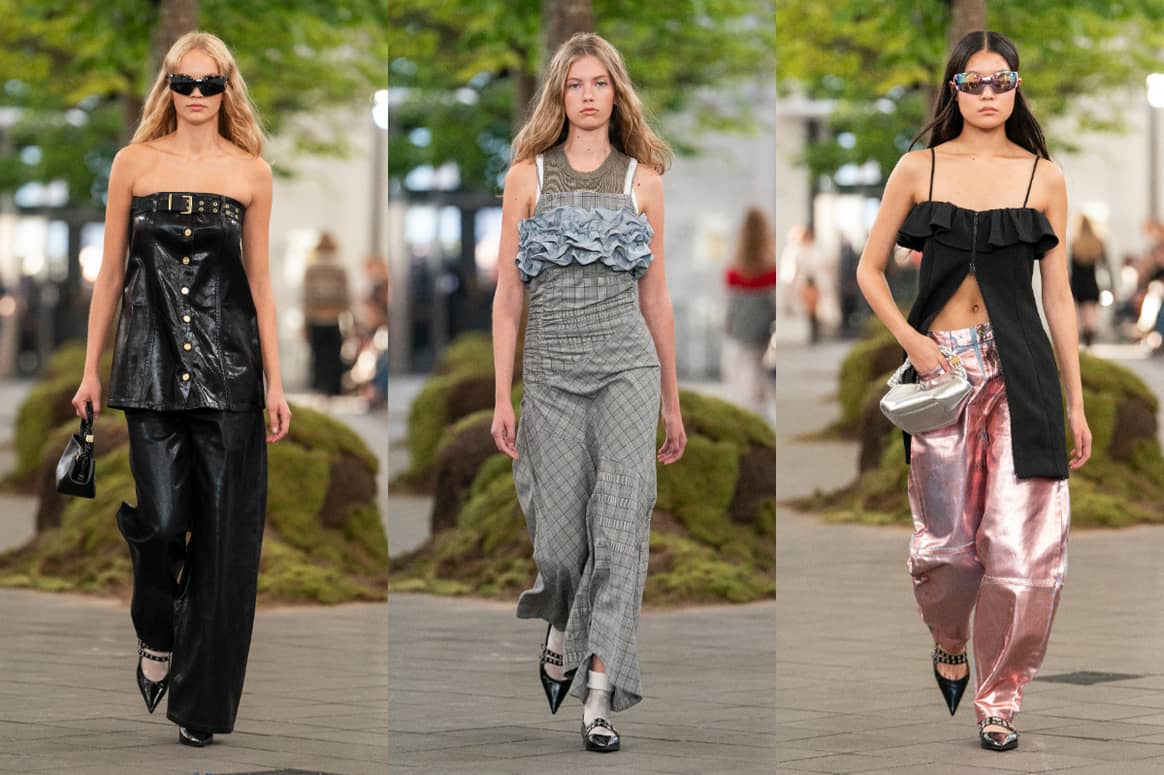Engaged in the clothing industry for 20 years.

CPHFW: Women-led brands making a mark on the Scandinavian market and beyond
A very rainy and windy Copenhagen Fashion Week (CPHFW) wrapped up last week. However, despite the lousy weather conditions, press, buyers and influencers alike turned up in droves to witness the spring/summer 24 collections of some of Scandinavia’s most sought-after designers. Category expansions and high-profile collaborations defined many of the collections for this season, hinting at brands’ intentions to bolster their presence and foster a sense of community among the industry. Notably, the Danish fashion week was also largely led by women, who are at the creative forefront of their own brands and pushing a new take on the concept of femininity.
Encapsulating a sense of home
Like those of their emerging counterparts, established designers on the CPHFW runway explored a sense of intimacy for their collections, often delving into their past as a starting point, reflecting a wider industry trend for authenticity and genuinity. Stine Goya, for example, opted to show her collection on the street in which she lives, taking its title ‘Homecoming’ quite literally. Residents and neighbours contributed to the “communal dinner table” that ran through the alley, around which the models – many old friends of the brand – paced alongside and sat at, in an attempt to exhibit the idea of “home” as a concept rather than a physical space. Speaking on this, creative director Goya said in a release: “My desire for this show is to encourage our audience to contemplate the significance of ‘home’ as an emotional anchor in our lives. It’s a place where we find belonging, solace and support.”


In a sense, the designer also “returned home” when it came to the clothing, by looking back on her early years in the industry as a source of inspiration and referencing the brand’s roots through sentimental prints reminiscent of local flora and fauna. An influx of new styles were a further indication of the brand’s evolution, as was the emphasis on responsibly sourced materials, which Goya said now made up 93 percent of the ready-to-wear offering. On her collection as a whole, Goya noted: “I rarely take time to reflect on our journey as a brand. For SS24 I felt the overwhelming urge to do just that. Taking a moment to look back on our development and delve into some of my early styling references which really did feel like a homecoming.”
A similar theme of looking in on oneself was further eminent at Remain, where designer Denise Christensen displayed a collection intended to spur on inner reflection. While 3D fabrics, such as coated denim and diaphanous blouses, were selected to encourage observers to look closer at the details, leather was at the collection’s foundation. The material was used to communicate maturity and femininity, parallel to contrasting materials such as transparent knits and sheer skirts that aimed to portray the balance in opposition. To bolster this point, these delicate pieces were then often paired with strongly cut outerwear, complete with wide shoulders and exaggerated detailing.


Embracing a new femininity


The concept of self-reflection was also integral to the collection of Lovechild 1979, which had been entrenched in the “quintessential woman”, described by the brand to be proficient and sophisticated. Through the use of both tactile and unrefined materials, the brand’s creative director Anne-Dorthe Larsen, presented a twist on femininity through the reinvention of structural masculine shapes, creating what she said was a “hybrid between atelier and soft summer dressing”. At the centre of the line was Lovechild’s collaboration with a Danish/Peruvian female community who aided in the production of an alpaca yarn, reaffirming the brand’s commitment to material craftsmanship and heritage techniques. Lovechild also used the runway to present an expansion of its leather accessory programme, developing on its past offerings and exploring new black and tan colour palettes.


The Garment, meanwhile, was another that set out to intertwine the synergies of the feminine and masculine, offering up a collection that similarly was targeted towards the career-minded “modern woman”. The brand, led by Sophia Roe and Charlotte Eskildsen, aimed to encapsulate what it means to be a woman today, resulting in the outpouring of aesthetic details and minimalist design in the form of tailored clothing and delicate techniques. For inspiration, Roe and Eskildsen dove into headwear and workwear from the 19th-century, reinventing historic pieces to serve a vastly different purpose than their origin, which had often seen them in the backdrop of a woman’s former place in society; at home. Now, however, the two designers looked to bring these old gender roles into new garments that proposed a refined wardrobe of timeless staples.
A lighter take on this topic was approached by Saks Potts, another label headed by a designer duo – in this case, Barbara Potts and Cathrine Saks. For this season, the brand referenced the typical climate of Danish summers, usually characterised by unpredictable, rainy periods – a suitable theme considering the lacklustre weather during fashion week. This led Potts and Saks to create “a perfect holiday wardrobe”, which would allow wearers to adapt to various occasions, taking them from the beach to the bar. Much of the line consisted of looks that combined best-selling items in previous collections with new materials and cuts, with one stand out piece being that of the reinvented ‘Emrata’ dress, a garment initially designed for Emily Ratajkowski and has since become highly sought-after by the brand’s loyal clientele.




Rikke Baumgarten and Helle Hestehave, the creative minds behind Baum und Pferdgarten, also looked towards their home base of Copenhagen for the core of their SS24 line. Entitled ‘A Postcard from Copenhagen’, pieces in the collection were grounded in a nautical theme, in reference to the city’s harbour and the maritime lifestyle that still inhabits it today. Sailor hats, striped knit bags and a navy and white colour palette were quite literal translations of the concept, many paired with quilted textiles and pink denim, used for a more figurative approach, linking closely to flora in the King’s Garden and the Little Mermaid statue. In a release, the brand concluded: “Ultimately, the collection is all inclusive, embracing the style of the many and praising the often artistic ways that people dress for the everyday.”
Pushing community through collaboration
For OpéraSport, nature played a big role in the spirit of the brand’s collection, with designers Stephanie Gundelach and Awa Malina Stelter drawing inspiration from the colours and silhouettes found in early spring to high summer. In a joint statement, the duo said: “OpéraSport was born with a responsible mindset, why the relationship to nature is something that we value – therefore it feels so natural, that we are having our first show under open sky and surrounded by nature. We wanted to make nature speak for itself, which is something we have used as the creative direction for this show.”
Practical fits made up the brand’s newly extended range of unisex designs, some incorporating the leftover materials of previous garments to form showpieces, each of which became available immediately following the show. This season also saw the brand step into the footwear category, offering for the first time a three piece shoe collection made in collaboration with The Garment Project. A pair of heels, sandals and loafers traversed the runway, each crafted using recycled vegan leather, as noted in a release.


One of the typically most highly-anticipated shows of course, was that of Ganni, where, as usual, material innovation was also at the forefront – seen in the use of fabric produced from olive oil production waste streams and plastic-free sequins developed in a combination of seaweed and agricultural waste. However, unlike past seasons, sustainability was not a definitive pointer for the Danish brand. Instead, creative director Ditte Reffstrup surprisingly turned to artificial intelligence (AI) to form the basis of her show. Via a collaboration with artist Cecilie Waagner Falkenstrøm, Reffstrup aimed to portray a thoughtful, philosophical take on the technology, looking to embody it in a physical form.
In a release, the designer said: “Recently, [AI] feels like something else to panic about, because it’s so far from my world. But I was thinking about AI’s potential for good. As a mother of three kids, and as a woman running a business, I think a lot about how to raise my kids to be kind, to feel secure, to be responsible. It’s the same with Ganni, how do we grow this brand into the most responsible business it can be? So we talked about how it might be possible to create a kinder, more thoughtful AI, one that does good.”
For the collection, however, things took on a bit more of a human form, with collaborations at the heart of Ganni’s display. For one, the brand offered a teaser into an upcoming size-inclusive collection made alongside Danish model and long-time Ganni muse Paloma Elsesser, who donned the runway in a textured two-piece set – just one look from the capsule set to drop spring 2024. Other collaborations that graced the runway included a three-piece sneaker line with New Balance, and the second edition of Ganni’s partnership with Dutch eyewear brand Ace & Tate, for which nine new styles were unveiled.

